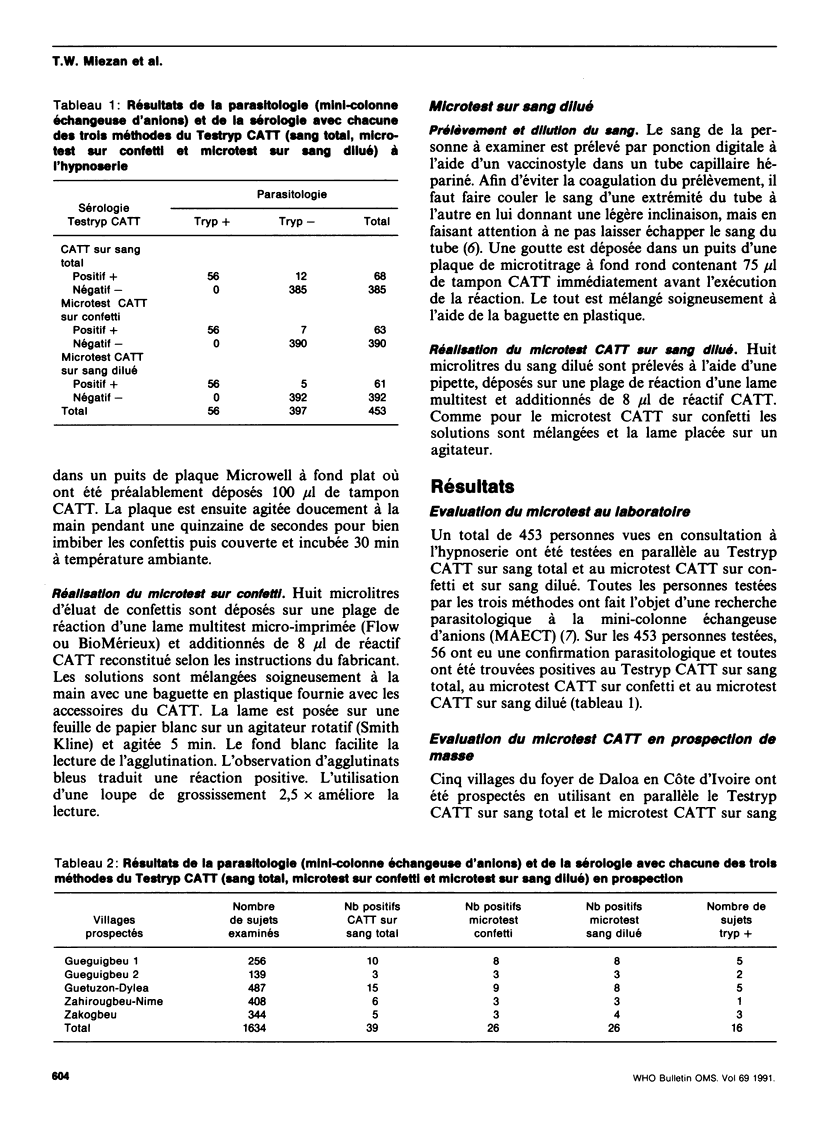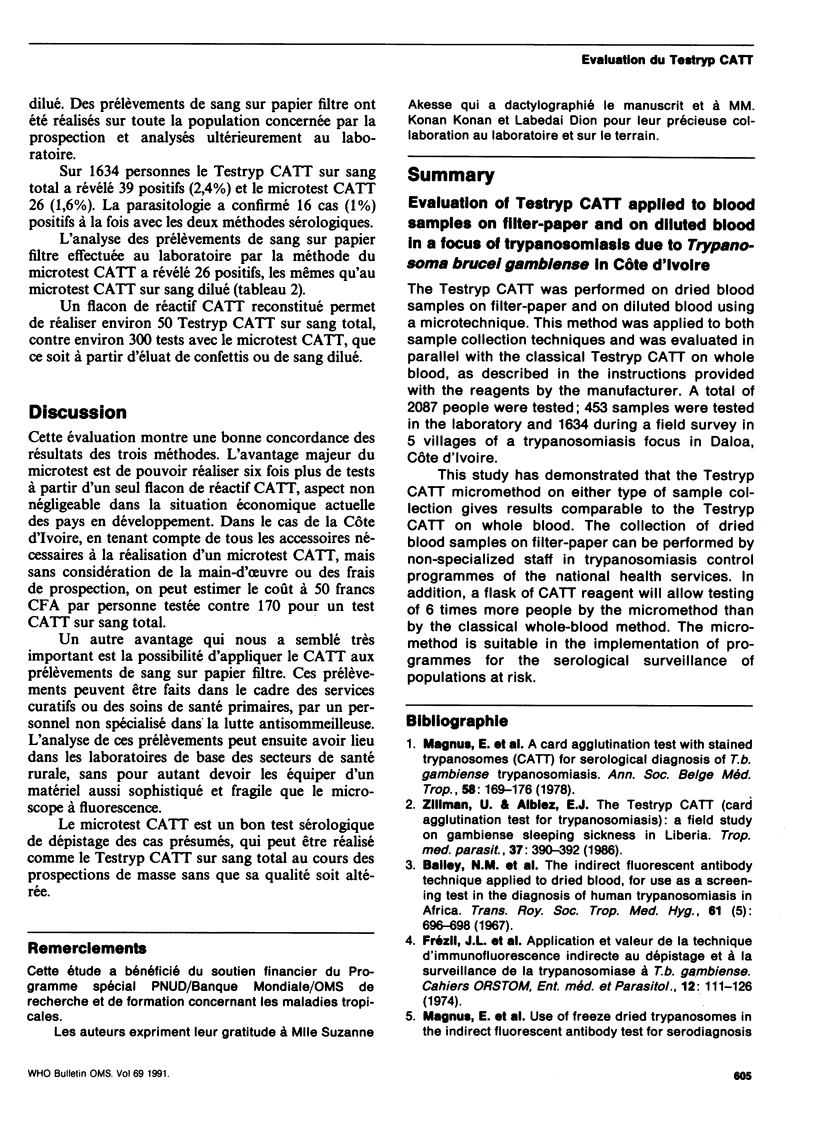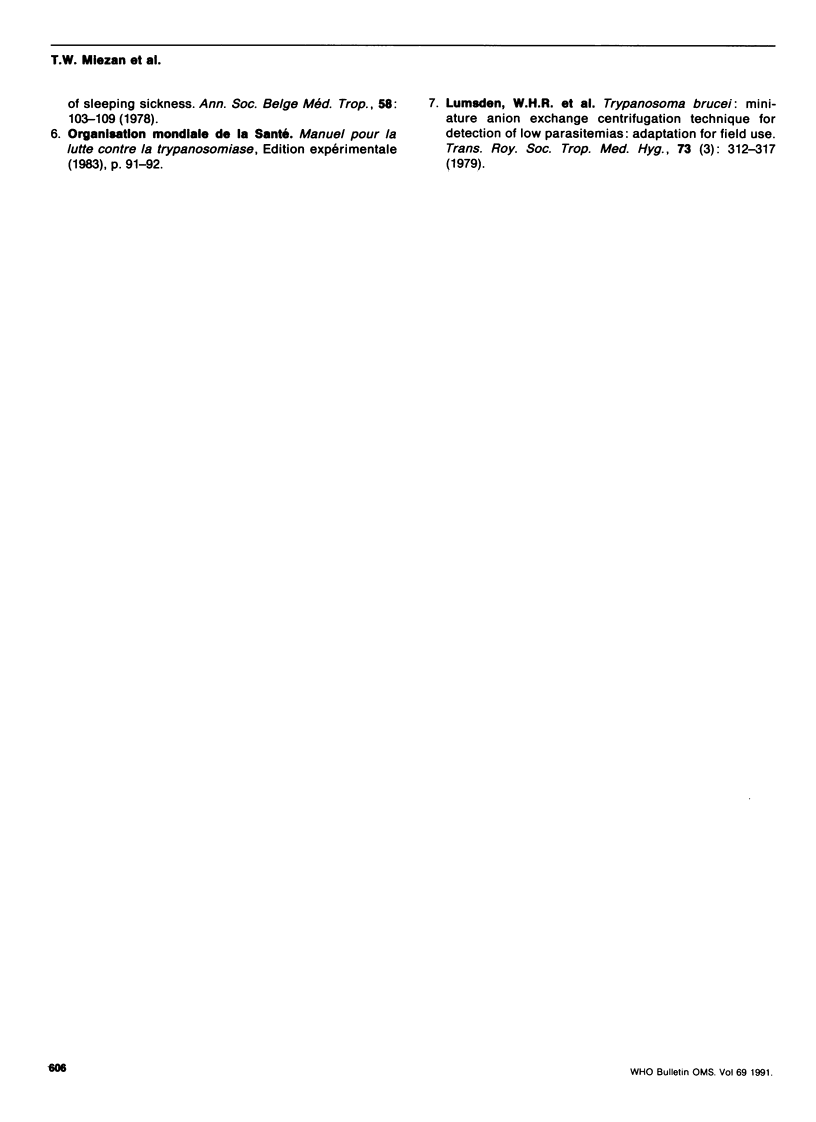Abstract
The Testryp CATT was performed on dried blood samples on filter-paper and on diluted blood using a microtechnique. This method was applied to both sample collection techniques and was evaluated in parallel with the classical Testryp CATT on whole blood, as described in the instructions provided with the reagents by the manufacturer. A total of 2087 people were tested; 453 samples were tested in the laboratory and 1634 during a field survey in 5 villages of a trypanosomiasis focus in Daloa, Côte d'Ivoire. This study has demonstrated that the Testryp CATT micromethod on either type of sample collection gives results comparable to the Testryp CATT on whole blood. The collection of dried blood samples on filter-paper can be performed by non-specialized staff in trypanosomiasis control programmes of the national health services. In addition, a flask of CATT reagent will allow testing of 6 times more people by the micromethod than by the classical whole-blood method. The micromethod is suitable in the implementation of programmes for the serological surveillance of populations at risk.
Full text
PDF



Selected References
These references are in PubMed. This may not be the complete list of references from this article.
- Bailey N. M., Cunningham M. P., Kimber C. D. The indirect fluorescent antibody technique applied to dried blood, for use as a screening test in the diagnosis of human trypanosomiasis in Africa. Trans R Soc Trop Med Hyg. 1967;61(5):696–700. doi: 10.1016/0035-9203(67)90135-6. [DOI] [PubMed] [Google Scholar]
- Lumsden W. H., Kimber C. D., Evans D. A., Doig S. J. Trypanosoma brucei: Miniature anion-exchange centrifugation technique for detection of low parasitaemias: Adaptation for field use. Trans R Soc Trop Med Hyg. 1979;73(3):312–317. doi: 10.1016/0035-9203(79)90092-0. [DOI] [PubMed] [Google Scholar]
- Magnus E., Vervoort T., Van Meirvenne N. A card-agglutination test with stained trypanosomes (C.A.T.T.) for the serological diagnosis of T. B. gambiense trypanosomiasis. Ann Soc Belg Med Trop. 1978;58(3):169–176. [PubMed] [Google Scholar]


